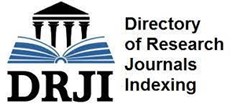Subject Area
Miscellaneous
Document Type
Clinical Study
Abstract
Background Data: Osteoporosis is a systemic skeletal disease characterized by low bone mass and microarchitectural deterioration, with a consequent increase in bone fragility. Moreover, it is a condition that is both preventable and treatable if caught in time. Purpose: Evaluation the different perioperative enhancing factors available that mightincrease spinal fixation success rate in low bone density postmenopausal women. Study Design: retrospective analysis of a case series. Patients and Methods: Between May 2011 and May 2013, twenty four low bone density post-menopausal women were included in this retrospective study. All of them were admitted at KSMH-Hospital-Tabouk. During that period, they had either thoracic or lumbar implants for two major indications, osteoporotic vertebral compression fractures and osteodegenerative spondylolisthesis. Different techniques and precautions were followed to maximize the outcome. Pre-and postoperative bone densitometry, radiograph, pain and functional outcome assessment were documented. All patients were followed up for at least 12 months. Results: The mean age of the ladies was fifty eight years. 62.5% of the patientswere classified as osteoporotic, with a further 37.5%, being osteopenia. Ten surgical fractures and fourteen cases of spondylolisthesis had implants. In densitometry, little postoperative change happened in the fracture series. However, Remarkable improvement was obvious in the spondylolisthesis series. Based on postoperative radiograph control and follow up, no reported cases of implant failures, loosening, pull-out screws or pseudoarthrosis necessitated re-surgery in one hundred twenty inserted screws. Three cases of severely osteoporotic spondylolisthesis were supported with rhBMP-2 that showed adequate fusion before expected. Out of twenty two cement injected screws in four spondylolisthesis cases, one screw showed silent extra vertebral leakage and failure of injection in another one. In the fracture series: The Beck’s index mean pre- and postoperative was (0.44 versus 0.67, P=0.013). The kyphotic angle mean pre- and postoperative was (13∘ versus 8∘, P=0.007). In the spondylolisthesis series: The total pre-and postoperative score of disc height narrowing was (77 versus73, P=0.95). No change in the osteophyte score pre-and postoperatively. Vacuum Sign was positive in 40% of fracture series and 57% of spondylolisthesis series. It did not show any change in the former. However, the latter showed an improvement in 37.5% cases completely and 25% partially. The lumbar lordosis angle mean pre- and postoperative was (25∘ versus 29∘, P=0.01). 40% in the fracture series with marked paraparesis and 7% in the spondylolisthesis regained the full power by the end of the year. Pre- and postoperative mean of low back pain rating scale were (115 versus 23, P=0.001). pre- and postoperative mean of walking distance in meters were (22 versus 448, P=0.001). 83.3% of the patients quit morphine in three months. Conclusion: Treating the osteoporotic spine involves multidisciplinary approach with involvement of endocrinologist, rheumatologist, physical therapist and orthotic personnel. Preoperative planning is important as the spine surgeon should be aware of potential complications that can occur and various medical precautions and surgical techniques to minimize these complications. Local operative measures significantly improve the bony status at the operative site. However, Long term bone health is important even with complete fusion to avoid adjacent level deterioration. (2014ESJ070)
Keywords
Postmenopause, Osteoporosis, Implants
How to Cite This Article
Awadalla, Akram; Assar, Bashar; Mustafa, Yassin; and Ragab, Hosnia
(2014)
"The perioperative enhancing factors that might help the postmenopausal women tolerate the spinal implants,"
Advanced Spine Journal: Vol. 10
:
Iss.
1
, Article 1.
Available at: https://doi.org/10.21608/esj.2014.3871























